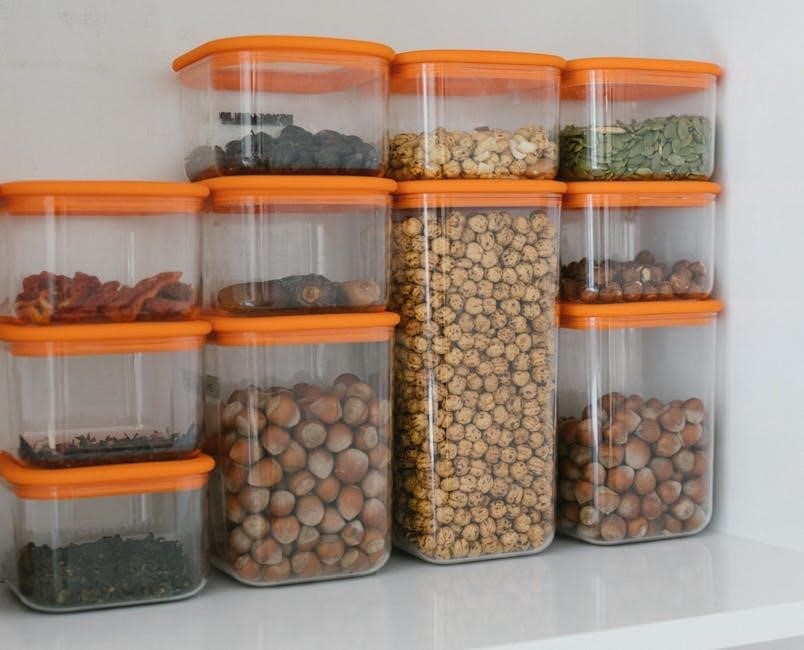Proper storage of wheelie bins is essential for maintaining a tidy outdoor space. This section introduces the importance of using plans and tutorials for effective wheelie bin storage solutions, ensuring durability and style while keeping bins hidden from view.
Overview of Wheelie Bin Storage
Wheelie bin storage solutions are designed to keep outdoor spaces organized and tidy by hiding unsightly bins from view. These storage units come in various styles, including single, double, and triple bin options, and can be made from durable materials like wood or plastic.
Outdoor storage units are ideal for gardens and yards, while indoor solutions cater to garages or utility areas. Detailed plans and tutorials, often available as PDF guides, provide step-by-step instructions for building custom storage units tailored to specific needs;
These plans typically include materials lists, cutting guides, and assembly instructions, making it easy for DIY enthusiasts to create functional and stylish storage solutions. Whether for one bin or multiple, these units help maintain a clean and clutter-free environment while protecting bins from weather and pests.
Importance of Proper Storage
Proper storage of wheelie bins is essential for maintaining a clean and hygienic outdoor or indoor space. Without adequate storage, bins can become unsightly, emit unpleasant odors, and attract pests like rodents or insects.
Leaving bins exposed to the elements can lead to damage from weather conditions, reducing their lifespan. Additionally, proper storage enhances the overall appearance of your property, preventing clutter and ensuring a neat, organized environment.
By using storage solutions, you can also improve safety by preventing bins from tipping over, which could cause accidents or spills. Investing in a well-designed storage unit not only protects your bins but also adds value to your property by keeping it visually appealing and functional.
Benefits of Using Plans and Tutorials
Using detailed plans and tutorials for wheelie bin storage offers numerous advantages, especially for homeowners and DIY enthusiasts. These guides provide clear, step-by-step instructions, making it easier to construct or assemble storage units efficiently.
Plans and tutorials help save time by eliminating guesswork, ensuring that the final product is functional and visually appealing. They also empower individuals to customize their storage solutions according to specific needs and space constraints.
Additionally, following structured guides can reduce costs by minimizing material waste and ensuring proper construction techniques. This approach also fosters confidence, allowing even those with limited DIY experience to achieve professional-looking results.
Overall, using plans and tutorials is a cost-effective, time-saving, and stress-reducing way to create durable and stylish wheelie bin storage solutions that enhance your property’s organization and aesthetics.
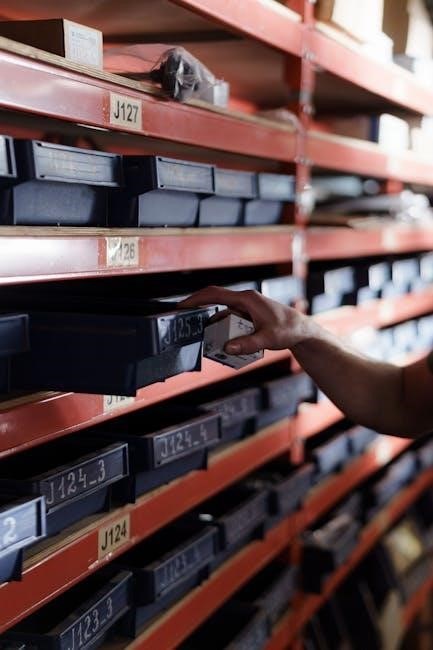
Types of Wheelie Bin Storage Plans
Wheelie bin storage plans vary widely, offering solutions for single, double, or triple bins, outdoor or indoor setups, and materials like wood or plastic to suit different needs and preferences.
Single, Double, and Triple Bin Storage Options
Wheelie bin storage plans cater to various needs with single, double, or triple bin configurations. Single bin storage is ideal for small spaces, holding one wheelie bin securely. Double bin options offer versatility, accommodating two bins side by side, while triple bin solutions maximize capacity for larger households or commercial use. These designs ensure bins are neatly organized, protecting them from weather and pests. They often feature space-saving layouts and easy access. Whether you’re managing limited outdoor space or need a practical indoor solution, these plans provide scalable options to keep your bins tidy and out of sight. The configurations adapt to different settings, ensuring functionality and aesthetics in both residential and commercial environments. Each option is tailored to specific requirements, offering a practical way to maintain a clean and organized space.
Outdoor vs. Indoor Storage Solutions
Wheelie bin storage plans offer versatile options for both outdoor and indoor use, catering to different spaces and requirements. Outdoor storage solutions are designed to withstand weather conditions, often featuring durable materials like plastic or metal. These units may include weatherproof lids or roofs to protect bins from rain and sunlight. Indoor storage, on the other hand, is ideal for garages, sheds, or utility rooms, focusing on space-saving designs and keeping bins out of sight. Indoor units often prioritize ventilation to prevent odors and moisture buildup. Both options provide secure and tidy ways to store bins, ensuring a clean and organized environment. The choice between outdoor and indoor solutions depends on available space, climate, and specific needs. Proper installation ensures functionality and longevity, whether the storage unit is placed outside or inside.
Wooden vs. Plastic Storage Units
When choosing between wooden and plastic storage units for wheelie bins, several factors come into play. Wooden units offer a natural, aesthetic appeal and can blend seamlessly with traditional or rustic settings. They are often customizable, allowing for personalized designs and finishes. However, wood requires regular maintenance to protect against rot, pests, and weather damage. Plastic storage units, on the other hand, are lightweight, durable, and low-maintenance. They are resistant to moisture, pests, and fading, making them ideal for outdoor use. Plastic units are also easier to clean and often more affordable than wood. The choice between the two depends on budget, desired appearance, and the level of upkeep one is willing to commit to. Both materials provide effective solutions for keeping wheelie bins organized and concealed.

Design Considerations
Effective wheelie bin storage design requires careful planning to ensure functionality, durability, and aesthetic appeal. Measure bins accurately, choose durable materials, and incorporate ventilation for odor control and accessibility for easy use.
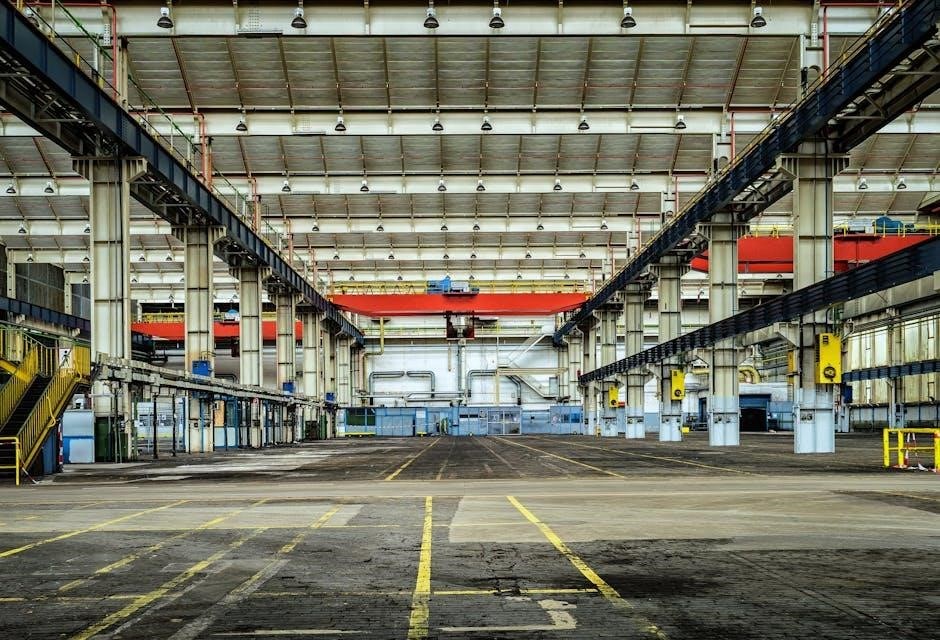
Measuring Your Bins for the Perfect Fit
Accurate measurements are crucial when designing wheelie bin storage to ensure a seamless fit. Start by measuring the height, width, and depth of each bin, including the lid and handles. Record these dimensions to plan the storage unit’s interior space. Consider the space between bins for easy access and ventilation. Use a tape measure or refer to manufacturer specifications for precise data. Proper sizing prevents overcrowding and ensures the bins sit securely. Double-check measurements to avoid errors during construction. For multiple bins, calculate total space requirements and plan accordingly. This step ensures your storage unit is functional and tailored to your needs. Always cross-reference your measurements with the storage plan to guarantee accuracy and a perfect fit.
- Measure height, width, and depth of each bin.
- Account for lids, handles, and spacing between bins.
- Double-check measurements for accuracy.
Refer to your wheelie bin storage plans PDF for detailed measurement guides and diagrams.
Choosing the Right Materials for Durability
Selecting durable materials is essential for constructing long-lasting wheelie bin storage. Wood, metal, and plastic are popular choices, each offering unique benefits. Pressure-treated wood is ideal for outdoor use, as it resists rot and pests. Cedar and pine are also durable options, though they may require sealing. Metal, such as aluminum or steel, provides strength and security but can be noisy and prone to rust. Plastic storage units are lightweight, low-maintenance, and weather-resistant, making them a convenient choice. Composite materials combine wood and plastic for enhanced durability and a sleek appearance. Consider your climate and budget when choosing materials. Ensure they can withstand moisture, pests, and heavy use. Durable materials will extend the lifespan of your storage unit and maintain its functionality. Refer to your wheelie bin storage plans PDF for material recommendations tailored to your project needs.
- Pressure-treated wood for outdoor durability.
- Metal for strength and security.
- Plastic for lightweight, weather-resistant options.
- Composite materials for a balance of wood and plastic benefits.
Ensuring Proper Ventilation and Accessibility
Proper ventilation and easy access are crucial for functional wheelie bin storage. Adequate airflow prevents odor buildup and moisture accumulation, reducing the risk of mold and pests. Incorporate vents or gaps in the design to promote air circulation. Accessibility ensures bins can be easily moved and replaced. Position the storage unit in a convenient location, such as near entry points, to simplify waste management. Ensure doors or lids open wide enough for easy bin removal and replacement. Smooth handles or rollers can aid in moving bins in and out. A clear path to the storage area is essential for hassle-free use. Regularly check and maintain the unit to ensure accessibility and ventilation remain optimal over time. These features enhance usability and longevity, making waste management more efficient and hygienic.
- Incorporate vents or gaps for airflow.
- Position the unit near entry points.
- Ensure wide door openings for easy access.
- Use handles or rollers for smooth bin movement.
- Maintain a clear path to the storage area.
Step-by-Step Building Plans
These plans provide detailed instructions for constructing wheelie bin storage units, ensuring a sturdy and functional design. Follow the tutorials for a seamless building experience.

Constructing the Side Frames and Base

Begin by cutting the wood according to the measurements specified in your PDF plan. Treat the wood with a weatherproof sealant if it will be used outdoors. Assemble the side frames by attaching them to the base using screws. Ensure the base is level and sturdy to support the weight of the bins. Sand any sharp edges for safety and apply a finish if desired. Double-check all measurements and alignments before securing the frames in place.
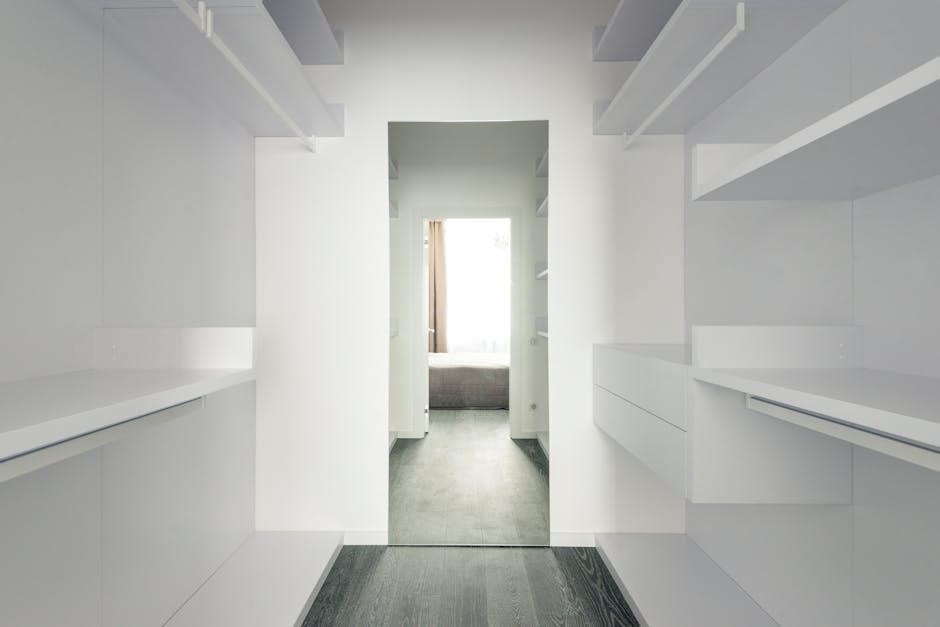
Adding Interior Dividers and Shelves
Once the side frames and base are in place, install interior dividers to separate the bins. Measure and cut the divider panels to fit snugly between the frames. Attach them using screws or brackets for stability. If adding shelves, ensure they are level and securely fastened. Shelves can be placed at varying heights to accommodate different bin sizes or additional storage needs. Use a spirit level to ensure proper alignment and avoid wobbling. Sand all surfaces to prevent splinters and ensure smooth installation. Double-check the fit of the bins within the dividers to ensure they slide in and out effortlessly. This step enhances organization and accessibility, making the storage unit more functional and user-friendly.
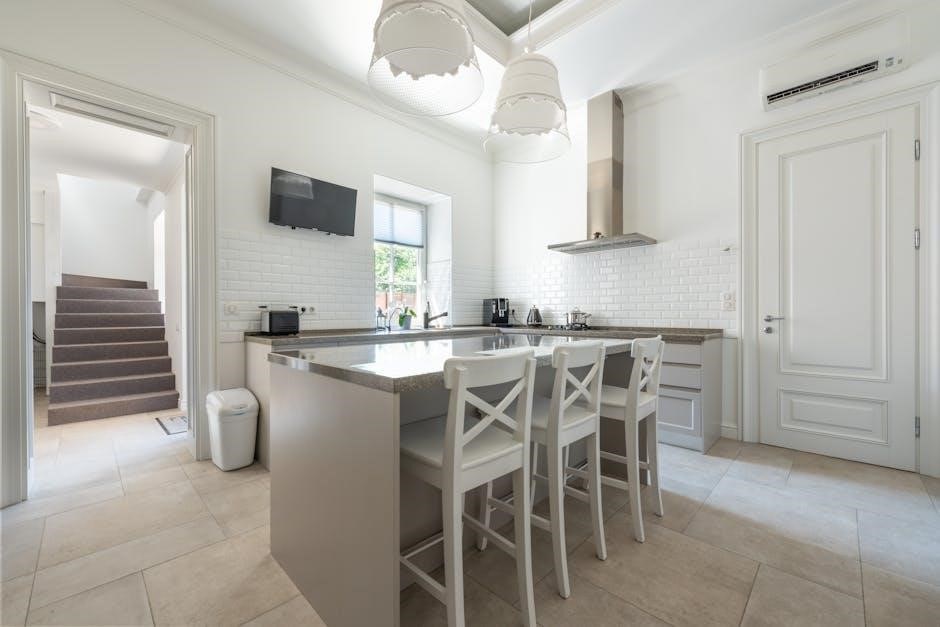
Installing Doors, Lids, and Handles
After constructing the main structure, focus on installing doors, lids, and handles to complete the functionality of your wheelie bin storage unit. Begin by attaching the doors to the frame using hinges, ensuring they open smoothly and align properly. Secure the hinges with screws and test the door movement to confirm ease of access. Next, install the lids, which can be fixed or hinged, depending on your design. Attach handles to both the doors and lids for easy opening and closing. Use durable materials like metal or sturdy plastic for the handles to withstand regular use. Finally, ensure all components are securely fastened and functioning smoothly. This step not only enhances accessibility but also improves the overall appearance of the storage unit, making it more practical and visually appealing for everyday use.
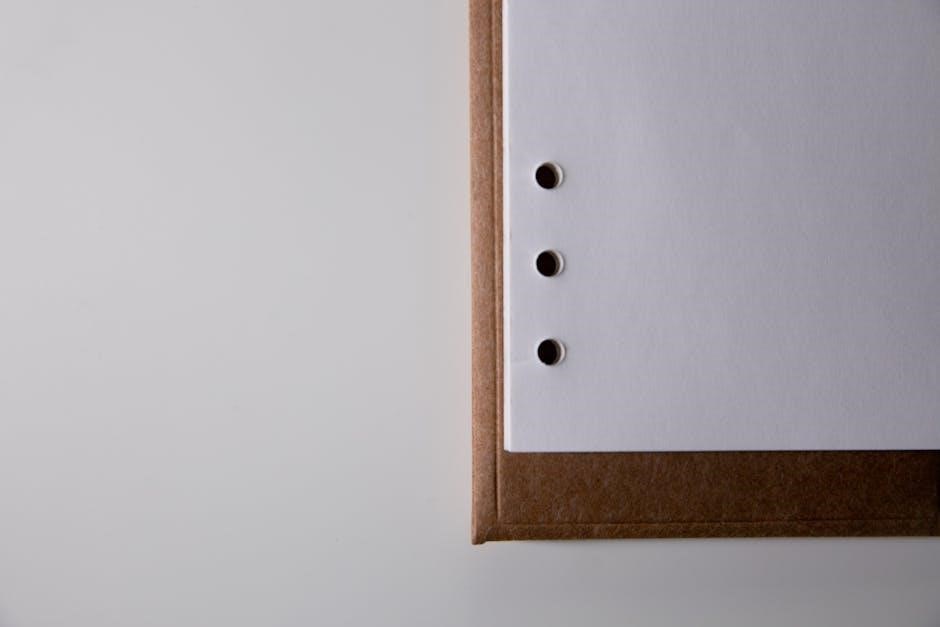
Advanced Features and Customization
Advanced features and customization allow you to enhance your wheelie bin storage unit with unique designs, improving both functionality and appearance tailored to your preferences for a personalized touch.
Incorporating Locks for Security
Incorporating locks into your wheelie bin storage unit ensures your bins are secure and protected from unauthorized access. This feature is particularly useful for preventing tampering or theft, especially in high-traffic areas. You can install padlocks or built-in locking mechanisms, depending on your design preferences. Locks also help maintain cleanliness by keeping pests and stray animals out. When choosing a locking system, consider durability and ease of use. Weatherproof locks are ideal for outdoor units to withstand rain and humidity. Additionally, locks can be customized to match your storage unit’s aesthetic, blending functionality with style. Regular maintenance of locks, such as lubricating hinges and replacing worn-out parts, ensures long-term security. This feature not only enhances safety but also adds value to your storage solution, making it a practical investment for your property.
Adding Finishing Touches and Paint
Adding finishing touches and paint to your wheelie bin storage unit enhances its appearance and protects it from the elements. A fresh coat of paint or sealant ensures durability, especially for outdoor units exposed to rain and sunlight. Choose weather-resistant paints or stains that complement your home’s exterior or garden decor. Before painting, sand the surfaces to ensure a smooth finish and apply a primer for better adhesion. Consider adding a protective varnish to wooden units for long-lasting protection. Custom colors and designs allow you to personalize the storage unit, making it blend seamlessly with your surroundings. Additionally, decorative trim or molding can add a stylish edge. Painting not only improves aesthetics but also helps maintain the unit’s condition, ensuring it remains a functional and attractive addition to your property for years to come.
Optional Roof and Weatherproofing Solutions
Adding a roof to your wheelie bin storage unit provides enhanced protection against rain, snow, and sunlight. This optional feature is particularly beneficial for outdoor units exposed to harsh weather conditions. You can choose from various roofing materials, such as corrugated metal, asphalt shingles, or PVC tiles, depending on durability and aesthetic preferences. Weatherproofing solutions, like applying a waterproof sealant or paint, further safeguard the unit from moisture damage. These additions not only prolong the lifespan of the storage unit but also maintain its appearance. For regions with heavy rainfall or extreme temperatures, a sloped roof design is recommended to ensure water runoff. Additionally, installing guttering can direct water away from the unit, preventing puddles and erosion around the base. These optional enhancements ensure your wheelie bin storage remains functional and visually appealing for years to come.
Maintenance and Upkeep
Regular cleaning and inspections ensure longevity. Check for damage, repair promptly, and apply protective coatings to prevent rust or pest infestations. This keeps your storage unit functional and durable.
Cleaning and Sanitizing the Storage Unit
Regular cleaning and sanitizing are essential to maintain hygiene and prevent pests. Use mild detergent and water to wipe down surfaces, removing any debris or stains. Rinse thoroughly and allow the unit to dry completely. For tougher odors or stains, consider using a diluted bleach solution, but ensure it’s rinsed away to avoid chemical residues. Always clean the bins themselves before placing them back in the storage unit. This practice prevents the buildup of bacteria and unpleasant smells, ensuring a clean environment for your waste bins. Regular sanitizing also helps extend the lifespan of the storage unit by preventing mold and mildew growth. By incorporating this into your maintenance routine, you can keep your wheelie bin storage area fresh and functional.
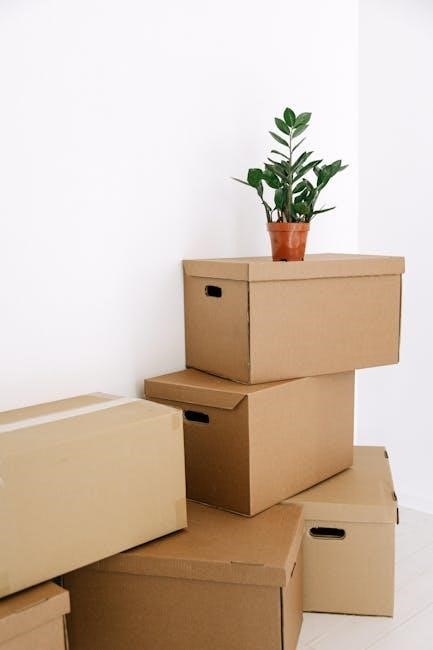
Regular Inspections for Damage
Regular inspections are crucial to identify and address any damage to your wheelie bin storage unit. Check for cracks, dents, or rotting wood that could weaken the structure. Look for signs of pest infestation, such as gnaw marks or droppings, which may indicate unwanted visitors. Inspect hinges, handles, and doors to ensure they are functioning smoothly and not showing excessive wear. For plastic units, examine for fading, warping, or brittle surfaces that may compromise durability. Perform these checks at least once a month and after severe weather conditions. Use a checklist to ensure thoroughness. Addressing issues early can prevent minor problems from escalating into costly repairs. Regular inspections help maintain the integrity and longevity of your storage unit, ensuring it remains functional and secure for years to come;
Repairing and Replacing Parts as Needed
Repairing and replacing parts of your wheelie bin storage unit is essential to maintain its functionality and appearance. Start by identifying damaged areas, such as broken hinges, cracked panels, or worn-out handles. For wooden units, sand and repaint scratched or weathered surfaces to prevent rot. Replace any rotten wood immediately to avoid structural compromise. Plastic units may require replacing brittle or cracked sections to maintain strength. Keep spare parts, like hinges and handles, on hand for quick fixes. If a part is beyond repair, consider sourcing replacements from the manufacturer or a hardware store. Regular repairs prevent further damage and extend the lifespan of your storage unit. Addressing issues promptly ensures your bins remain secure and protected from the elements. Always follow safety guidelines when making repairs to avoid injury or further damage.
